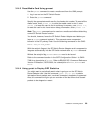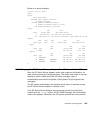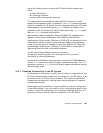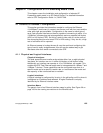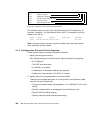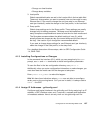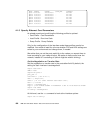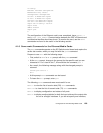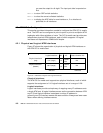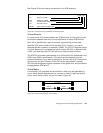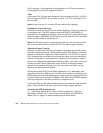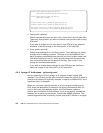Configuration of IP-Forwarding Media Cards 107
• Change run-time binaries
• Change dump variables
3. Load profile
Global executable binaries are set in the Load profile in the hw-table field.
These only change when you want to execute new run-time code in every
Ethernet card. If you want to change the run-time code in one Ethernet
card (per interface), make the change in the Card profile, in the load field.
4. Dump profile
Global dump settings are in the Dump profile. These settings are usually
changed only for debug purposes. The keep-count field specifies how
many dumps are compressed and stored at one time for each media card.
The file system accommodates the default setting of zero (0), which
actually stores two dumps per day (the current dump and the first dump of
the day). Use caution if you change the recommended default.
If you want to change dump settings for one Ethernet card (per interface),
make the change in the Card profile, in the dump field.
For a detailed discussion of these steps, refer to
GRF Configuration Guide
1.4,
GA22-7366
.
4.1.3 Installing Configurations or Changes
In the command line interface (CLI), which you can recognize by its super>
prompt, use
set and write commands to install configuration parameters.
To save the files in the /etc configuration directory, use
grwrite -v.
Additionally, when you enter configuration information or make changes, you
must also reset the media card for the changes to take place.
Enter
grreset <slot_number> to make this happen.
Hint
: We have found situations where grreset was not able to reconfigure
cards, ports or the running kernel. So if you are in doubt, it is always safe to
reboot -i the GRF.
4.1.4 Assign IP Addresses - grifconfig.conf
Configure each logical interface in the grifconfig.conf file by assigning it an IP
address, a GRF interface name, and, if required, a netmask and destination
or broadcast address. Here is an entry from our /etc/grifconfig.conf file:



